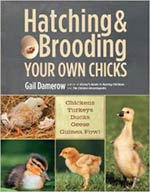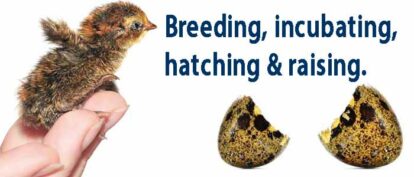
Equipment
Focus

In this Equipment Focus, I look at the RCOM 20 Incubator, a sophisticated, automatic digital incubator made by RCOM, South Korea.
The Rcom 20 incubator is available in three different models.
The standard model (around £260), the PRO model (around £369) and the PRO USB model (around £400), which comes with PC software and a USB connection and 3 egg trays – one for large Goose sized hatching eggs, one for chicken or duck hatching eggs and one for small eggs such as quail hatching eggs.
The model I purchased and have reviewed here is the top of the range PRO USB version for up to 20 chicken/duck hatching eggs.
It has a top of the range price tag too. So is it really worth it?
Hatching egg temperature and humidity
The temperature of the incubator was steady in all parts of the incubator. Using a calibrated thermometer from my work, I checked the accuracy of the machine. I found it was accurate. There was almost no fluctuation in the temperature; it was remarkably stable over time.
The humidity remained very stable to within ±1 per cent over a 28 day period, again, very impressive. The humidity of hatching eggs is often one of the most difficult to maintain at the correct level, and it is one of the most debated topics. You are almost certain to be told there was something wrong with the incubation humidity if you don’t get a good hatch.
Thinking of buying second-hand?
If you are thinking of buying second-hand, it is worth noting that there is an older variant of this incubator, and this one has a far better system of humidity generation than the other. The model released before 2008 has a rectangular sponge that soaks up a controlled amount of water from a reservoir to evaporate.
This works well for a time, but after 5 or 6 hatches, the sponge had deteriorated and crumbled into bits, which in turn stops the humidity control from working correctly. After speaking to the distributor, I found out that this was normal, and the sponge should be replaced when required. The cost for this sponge was around £7!
I spoke to somebody who had heard “on the grapevine” that a pack of 3 sponges the same can be bought from Wilkinson Stores (in the UK) for a fraction of the cost and should perform the same job. You can cut sponges down to fit if necessary, they are not particularly special.
The good news is the 2008 model does away with the sponge and does not suffer from this problem. I was pleased they swapped this model for me to the newer version, and I have found it to work consistently well for several hatches so far.
Egg turning
The RCOM 20 turns your hatching eggs automatically when operating in one of the pre-set modes. The turning is fully adjustable in manual mode. When turning, it plays a tune, but I have to admit I turned this off as it was driving me crazy at night when I was in the bedroom above our utility room where my incubators live. It is a simple job to deselect the tune via the incubator menu.
You have to make adjustments via the menu to set the hatching egg tray insert size. This ensures the egg turning is the correct amount. You don’t want to be turning small, hatching eggs through 360 degrees, or you are back to where you started!
Incubator control
The menu system is fairly intuitive and easy to use once you have a basic idea of how incubators work. There are several pre-programmed automatic pre-sets that cover most poultry that I found very useful.

This allows you to select ‘chicken’ or ‘duck’ hatching eggs, starting the automatic incubation cycle with ease. There is a handy ‘D day’ to hatch, so you know how much longer your eggs have to go.
Temperature and humidity are set automatically, and the eggs are turned in 90-minute increments. The incubator automatically stops turning the eggs and adjusts to the required higher humidity during the hatching period for the last few incubation days.
Even though the incubator is fully automatic, it is still possible to go into manual mode and make fine adjustments to the temperature or humidity as required.
I ran 2 batches of eggs under automatic control in the RCOM 20 incubator, Indian Runner Ducks and Marans Chicken hatching eggs and had a hatch rate on average of 80% on fertile eggs between the two hatches.
The true test of the fully automatic mode was last summer when I went on holiday for 10 days, leaving our live-in guest to top up the water every few days. I returned home, and 2 days later, all of my chicks hatched. A great welcome home!
Safety Alarms and Functions
The RCOM 20 Incubator has the following alarms and functions:
- If power fails, the incubation settings are saved.
- The fan cuts out when the lid is removed.
- A low water alarm is provided.
- An alarm sounds if the lid is not replaced.
- °C can be changed to °F for the temperature display.
RCOM 20 Incubator PC software
The RCOM 20 PRO USB connects up to a Windows-based PC via a standard USB cable. It has a piece of software supplied to control and monitor the incubator both in real-time and from a stored history log kept inside the incubator memory.
After spending a few hours testing the software, I felt the software was a bit disappointing. While the functionality sounded excellent, I found it very difficult to achieve anything useful quickly. It was far from intuitive to use, and the speed at which the incubator passed data (9600Bd) to the software was too slow by current standards.
Waiting for graphs to display was my biggest annoyance. The system was designed in South Korea, and much of the English was poorly translated in the manual, which added to our frustration in using parts of the software.
Despite this, some of the features are very useful; the history graph lets you look at temperature and humidity over the incubation period. This enabled me to look at the humidity graph and see how long ago the incubator had run out of water when I forgot to fill it up once and allowed me to see that there had been a power cut one night.
Recommended reading:
If you fancy incubating and hatching your own chicks then look no further than "Hatching & Brooding Your Own Chicks" by Gail Damerow. This indispensable reference covers everything you will need to know about incubating, hatching and raising chicks.

Cleaning
The stylish plastic design is easy to clean since the RCOM 20 incubator’s major parts come apart after undoing the clips on the rear of the unit, allowing most parts to be washed and sterilised easily between hatches. This is certainly welcome on an incubator, and some are notoriously difficult to clean with mess and fluff getting into places that cannot be cleaned easily like this.
Summary
Here is my summary of the RCOM 20 Incubator:
- The unit is microprocessor controlled, providing lots of adjustment and functionality if required in manual mode.
- The unit has an automatic pre-set mode that allows easy selection of species.
- Temperature and, more importantly, humidity is automatically set and controlled automatically.
- Egg turning control is fully automatic.
- The observation window is double-glazed, and it is easy to view your hatching eggs without removing the lid.
- The unit is easy dismantled for cleaning.
- There are useful safety alarms and functions (listed earlier).
- The humidity control system is better in all 2008 onward models; a sponge is not required.
- In my view, the PRO version with USB and PC software is not worth the extra cost.
Useful guides:
- Setting up your Incubator - How to set up an incubator and monitor temperature and humidity for a successful hatch.
- Incubation Humidity - What is the correct incubation humidity for hatching eggs?
- How to Collect and Store Hatching Eggs? - With the correct conditions, you can store hatching eggs for up to 2 weeks and still get excellent results!
Overall verdict
Overall I have found this incubator to be very good, if a little expensive. If you buy eggs to hatch, you will soon recoup the extra investment required to buy this fully automatic machine. Although I found the software a little frustrating, it does add useful extra functionality to the incubator, which is especially useful if you ever plan to incubate precious hatching eggs.
If you are buying a second-hand RCOM 20 incubator, check if the unit is the 2008 model (which doesn’t have a sponge fitted) as it will save you some cost and hassle.

"The RCOM 20 incubator is very sophisticated. Automated hatching programs make it easy to use, and the results have been good. The price is at the higher end for an incubator that only holds 20 eggs, and I don't think the PRO version is worth the extra money."
Tim Daniels Tweet



